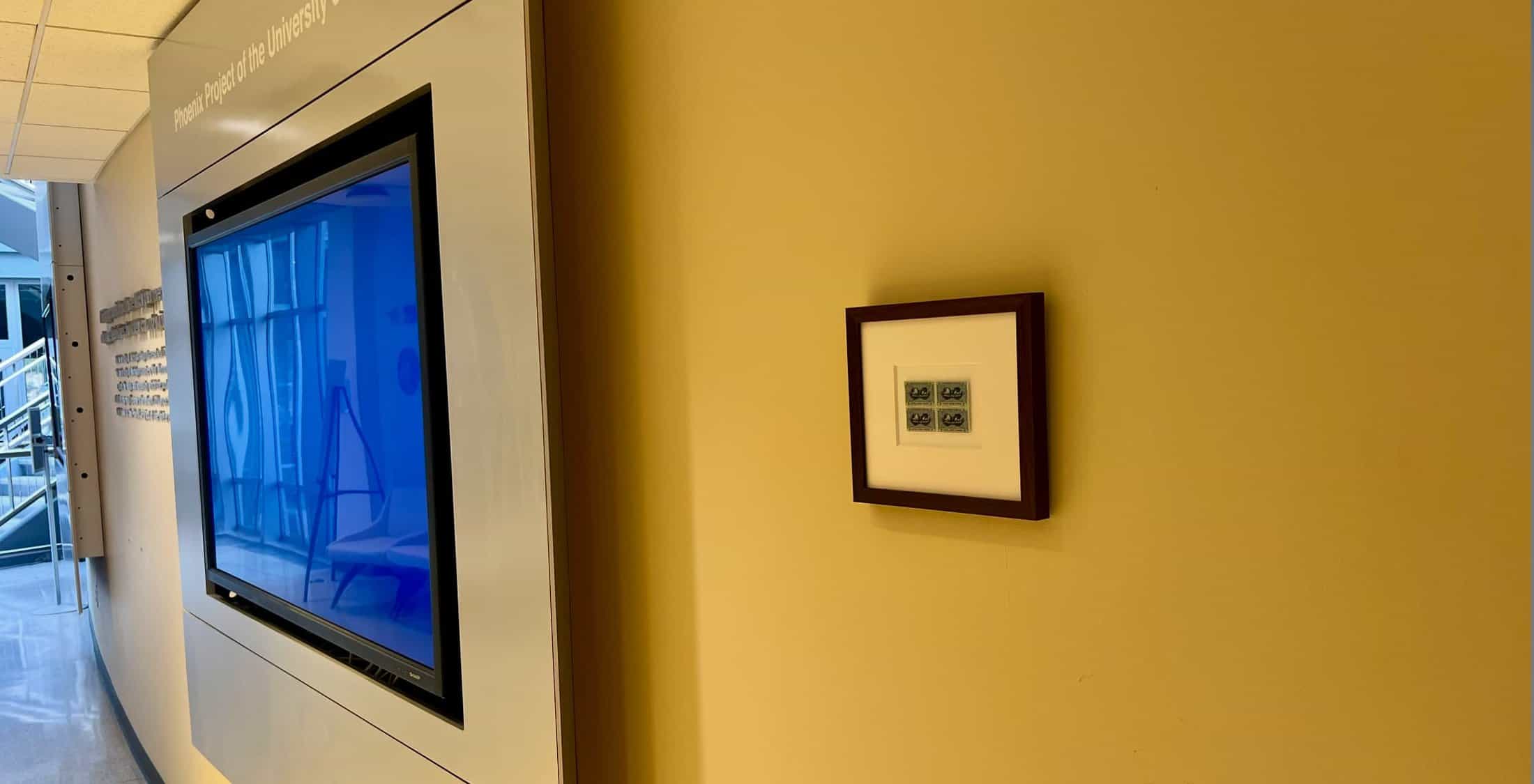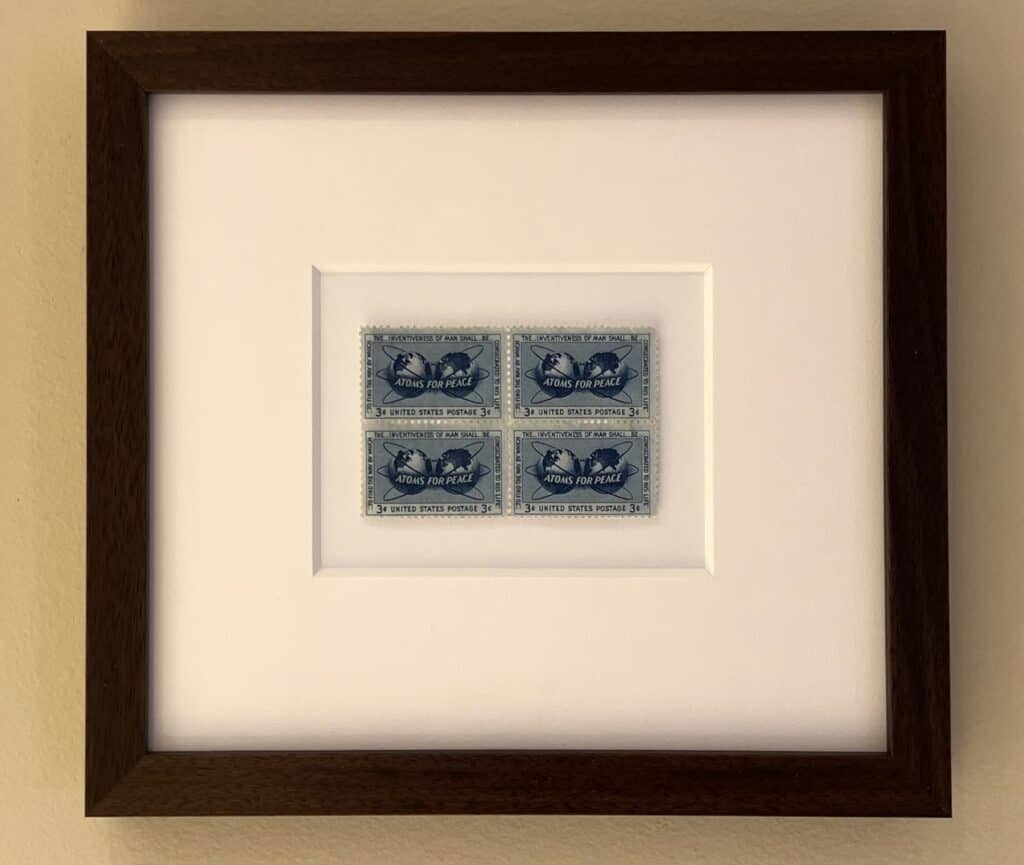
Atoms for Peace Stamps donated to NERS
The stamps can be viewed in the lobby of the Michigan Memorial Phoenix Project.

The stamps can be viewed in the lobby of the Michigan Memorial Phoenix Project.
The U-M Department of Nuclear Engineering & Radiological Sciences is honored to display four Atoms for Peace postage stamps, generously donated by Harry Cross. Issued on July 28, 1955, these 3¢ stamps symbolize a significant era in history when the promise of nuclear energy for peaceful purposes was a beacon of hope and progress.
Harry’s grandfather and namesake, a dedicated postman in Pontiac, Michigan, for 38 years, cherished these and other stamps of his era not as a traditional collector but as a way to engage with each new issue’s story and significance. His small box of stamps, carefully preserved and passed on to his grandson, engendered a personal connection to history and incited a desire to find “happy homes” for these bits of heritage.

Stamps for Peace
The Atoms for Peace stamp commemorates President Dwight D. Eisenhower’s initiative to promote the peaceful use of nuclear energy while curbing the proliferation of nuclear weapons. The initiative proposed the creation of an international atomic energy agency to oversee the development and distribution of nuclear technology for non-military purposes, such as medicine, agriculture, and energy production. It sought to foster international cooperation and transparency, redirecting the focus from the destructive potential of atomic energy to its capacity to enhance human welfare and global progress.
These stamps serve as a reminder of the enduring hope for a world where scientific advancements are harnessed for peace and the betterment of all.
In a charming anecdote, Harry recalls his days as a student at the University of Michigan.
“Over a half century ago, during my U-M student days, I got a taste of nuclear studies via PHYS 303 RADIOACT ISOTOPES (per my transcript, as assisted by my faint memories), taught by Professor Robert Tickle, whom I will always remember for the sharp clicking sound of his metal shoe plates as he strode confidently around his classroom. For me, he laid a frosting of ‘academic tap dancing’ on top of his substantial cake of serious and rigorous coursework.”
This memory adds a personal and nostalgic touch to the story of these stamps, linking them to a broader narrative of education, scientific curiosity, and the human stories behind historical artifacts.
We extend our heartfelt thanks to Harry Cross for this thoughtful donation.